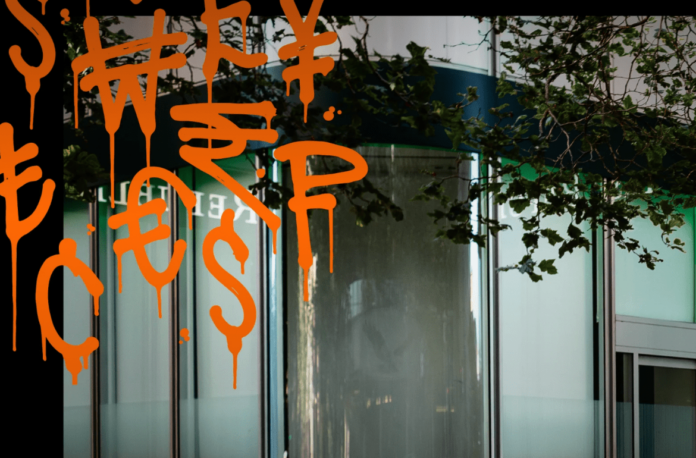Bitcoin Magazine has just launched its latest Ordinal inscription, honoring the new tradition of publishing the print edition covers directly to the Bitcoin blockchain.
This time, the company inscribed both the front and back cover of the magazine, as the “Withdrawal Issue” shows a unique full-spread design, complete with the spine.
Differently from previous launches, Bitcoin Magazine’s Q3 print magazine cover was inscribed leveraging state-of-the-art recursion technology, which has become popular with users of the Ordinals protocol.
Recursion works by allowing an inscription to reference other inscriptions previously added to Bitcoin. Many different use cases can arise from such an arrangement, and in this case the goal was to achieve print-quality digital image, while lowering the storage requirements as much as possible.
To achieve this, the team started with a 10.3 megabyte (MB) JPEG file of the front and back cover spread, chopped it up into 20 equal tiles, and exported each to make 20 new JPEGs. After the image file was cut into 20 separate files, the total size of the files dropped down to 2.9 MB. Next, each tile was converted into a WEBP file, which is more space efficient than a JPEG while retaining most of the quality. This step brought the total file size down to 1.6 MB, with the file sizes ranging from 28 to 134 kilobytes (KB). Each tile was then separately inscribed to the Bitcoin blockchain, allowing them to be referenced later by the main inscription, which would pull them all together.
Similar to the way a puzzle is completed, the main inscription leverages simple HTML code to piece together the 20 tiles into a cohesive canvas that is displayed on screen when users navigate to an Ordinals explorer. The pieces seamlessly fall into place to create the original cover of the magazine, all while being orders of magnitude more efficient and near the same quality as the original 10.3 MB image –– even though the final inscription is just a little over 3 KB, and the total size of the data added to Bitcoin is just over 1.6 MB in total. In contrast, the largest inscription ever –– Bitcoin Magazine’s Q2 2023 cover –– took almost a full block to inscribe, at 3.95 MB.
Recursion is meaningful because it allows huge files to be inscribed in a way that doesn’t add nearly as much data on chain as an outright inscription of the original image would lead to. Additionally, the technique allows for greater participation from collectors, as each tile can be separately owned, in addition to the main inscription –– a total of 21 inscriptions for this cover.
Without recursion, Bitcoin Magazine would need to coordinate with a mining pool to inscribe the 1.6 MB image, as the inscribing transaction would be larger than the maximum 400 KB of a standard transaction. With recursion, not only there is no need to circumvent Bitcoin Core’s standardness rules, but the end result is both cheaper and more efficient.
Credit: Source link






















 Bitcoin
Bitcoin  Ethereum
Ethereum  Tether
Tether  Solana
Solana  USDC
USDC  XRP
XRP  Lido Staked Ether
Lido Staked Ether  Dogecoin
Dogecoin  Toncoin
Toncoin  Cardano
Cardano  Shiba Inu
Shiba Inu  Avalanche
Avalanche  TRON
TRON  Polkadot
Polkadot  Wrapped Bitcoin
Wrapped Bitcoin  Bitcoin Cash
Bitcoin Cash  Chainlink
Chainlink  Polygon
Polygon  NEAR Protocol
NEAR Protocol  Internet Computer
Internet Computer  Litecoin
Litecoin  LEO Token
LEO Token  Uniswap
Uniswap  Dai
Dai  First Digital USD
First Digital USD  Aptos
Aptos  Ethereum Classic
Ethereum Classic  Hedera
Hedera  Cosmos Hub
Cosmos Hub  Cronos
Cronos  Mantle
Mantle  Pepe
Pepe  Stellar
Stellar  Filecoin
Filecoin  Immutable
Immutable  Stacks
Stacks  Render
Render  XT.com
XT.com  OKB
OKB  Renzo Restaked ETH
Renzo Restaked ETH  Optimism
Optimism  Arbitrum
Arbitrum  dogwifhat
dogwifhat  Bittensor
Bittensor  Sui
Sui  Wrapped eETH
Wrapped eETH  Maker
Maker 
